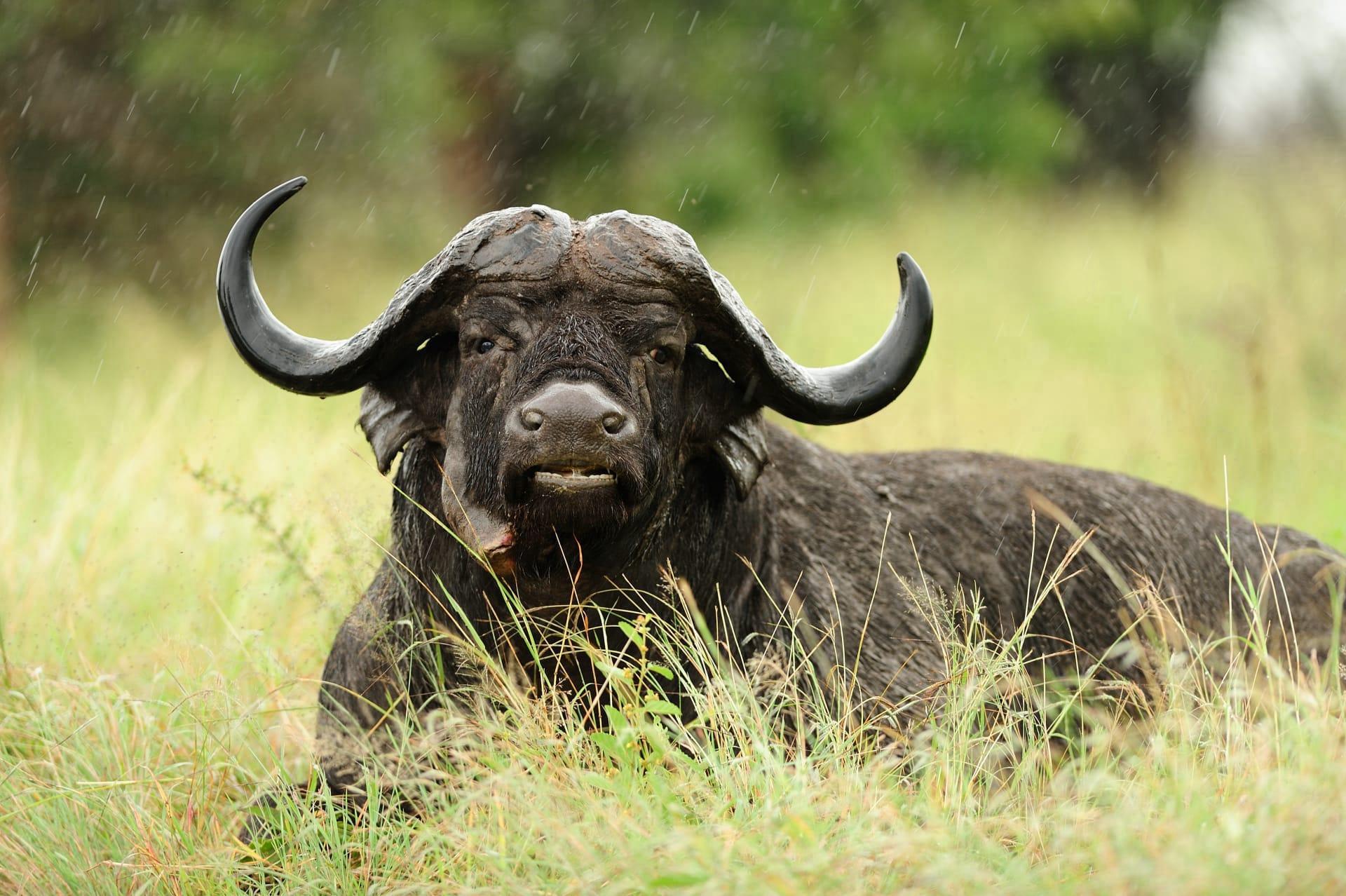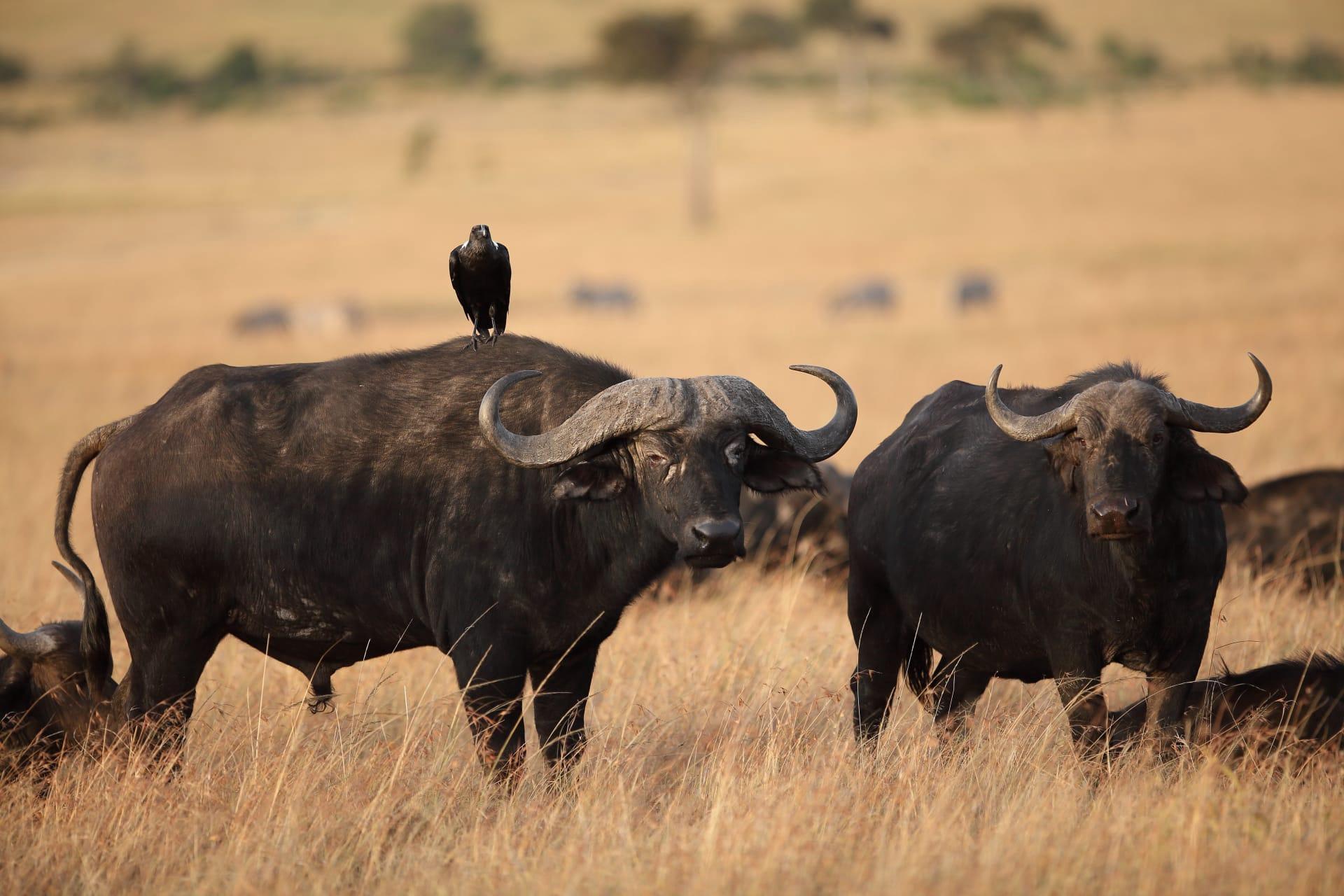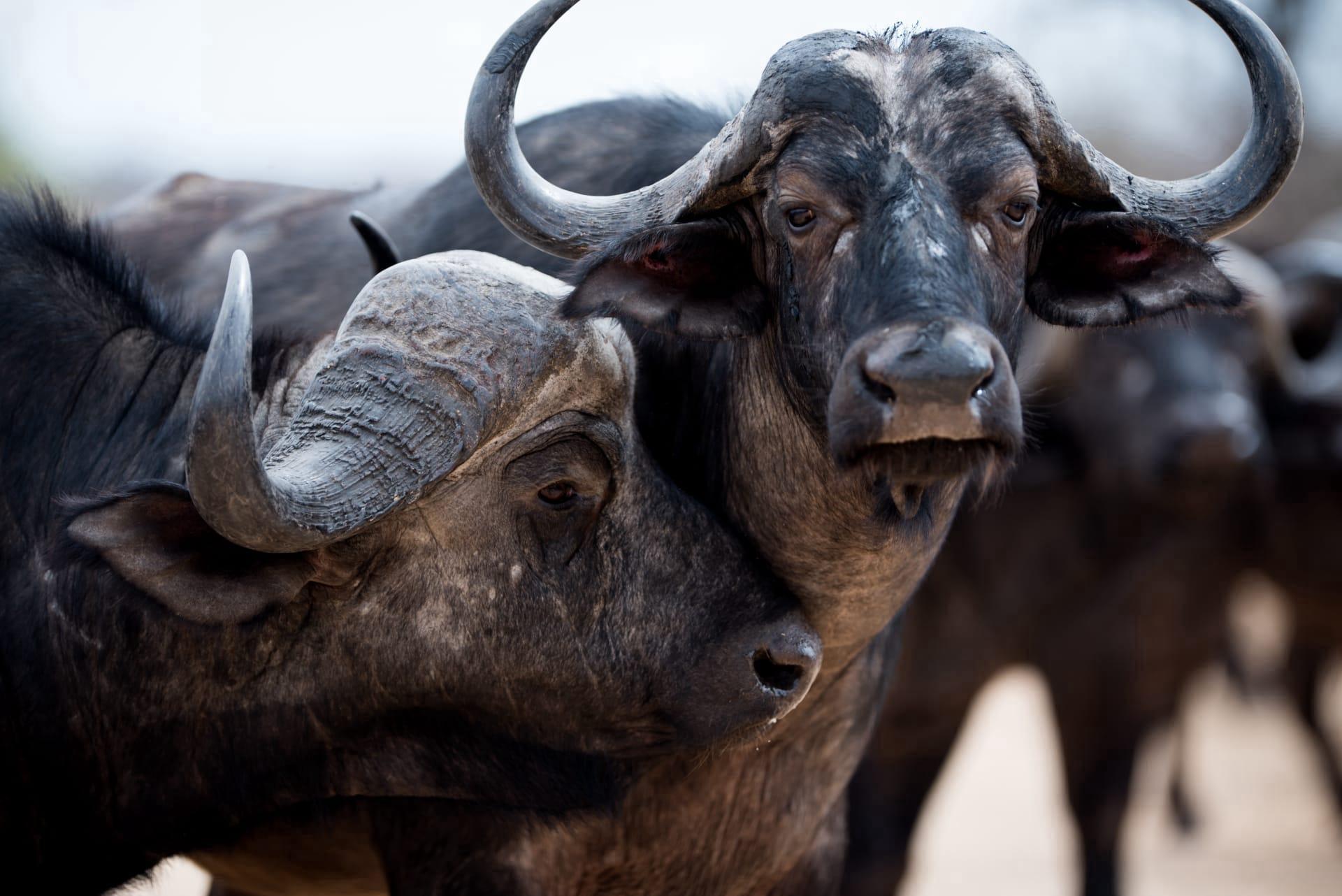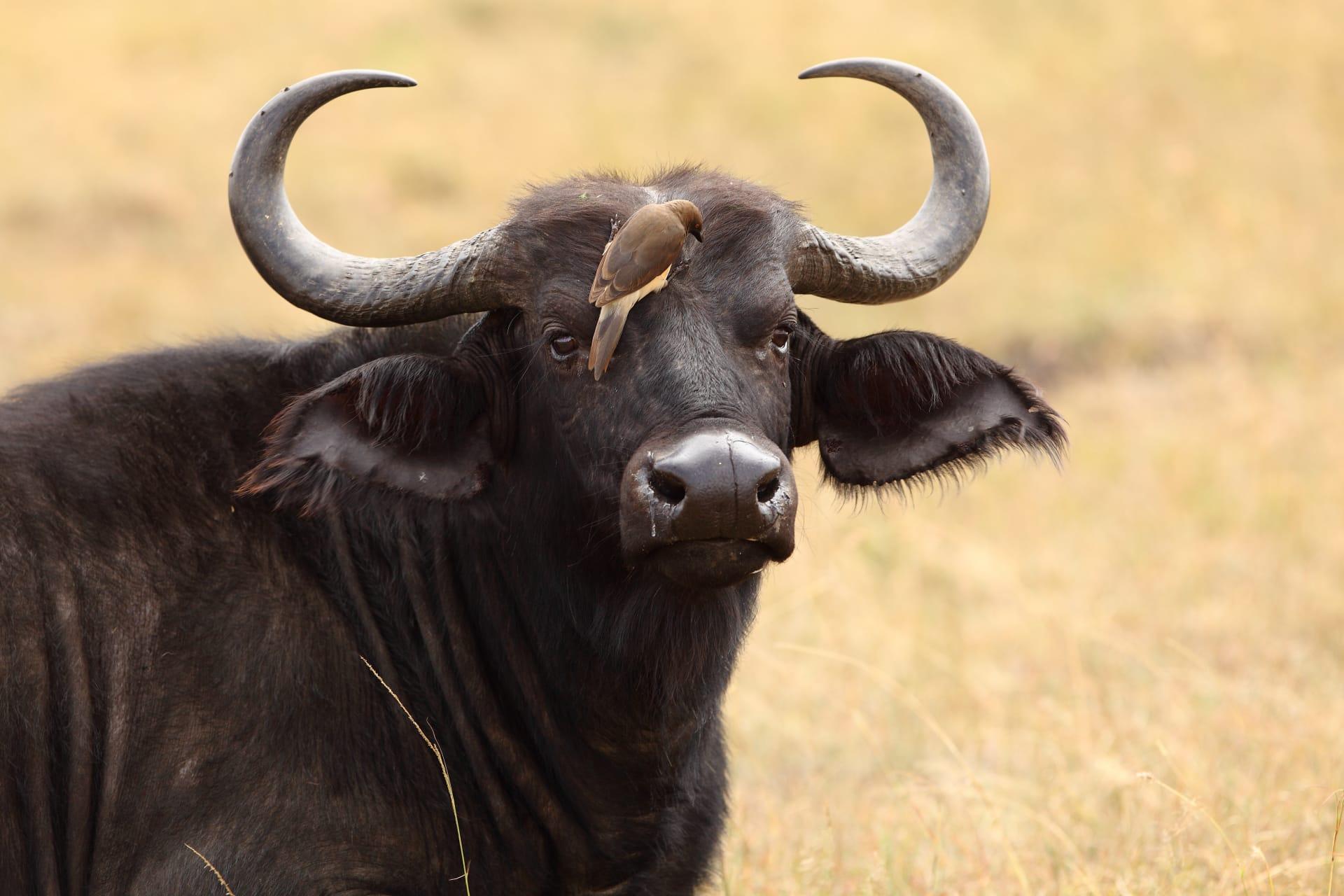1
African buffaloes, known scientifically as Syncerus caffer, are not the domesticated type you might see on a farm. They're wild, tough, and one of Africa's most formidable animals. Weighing up to 910 kilograms (2,000 pounds), these giants are impressive not just for their size but also for their rugged horns. Each horn can reach up to 40 inches in length, curving down and then up. The horns are not just for show; they're a key defense tool against predators like lions and are also used in battles for dominance within the herd.
Speaking of herds, African buffaloes are incredibly social creatures. They live in large groups, often consisting of hundreds, sometimes even thousands, of individuals. These herds are structured in a complex, hierarchical system and are known for their strong bonds. If a buffalo is attacked, others in the herd will aggressively come to its defense, often chasing away even the most fearsome of predators. This strong sense of community makes them one of the few animals that actively band together to rescue a member in distress.

2
Have you ever heard of 'voting' in the animal kingdom? African buffaloes do it! When it's time to move, individuals in a herd will stand up, look in the direction they want to go, and sit back down. This is their way of 'voting' for the next move. The herd will generally move in the direction that the majority of the buffaloes have 'voted' for. This democratic process in decision-making is rare among animals and highlights the intelligence and social complexity of African buffaloes.
Another intriguing fact about African buffaloes is their relationship with birds, specifically the oxpecker. These birds are often seen riding on the buffaloes, eating ticks and other parasites off their skin. This symbiotic relationship benefits both parties; the buffaloes get a free pest control service, while the oxpeckers get a steady food supply. What's more, oxpeckers often alert buffaloes to danger, acting like their personal bodyguards. This mutualism is a fantastic example of nature's interconnectedness.

3
Contrary to their rugged appearance, African buffaloes have a sensitive side - their sense of smell. They rely heavily on their sense of smell to communicate, find food, and detect predators, often over great distances. This olfactory prowess is essential for their survival, especially in the challenging environments of the African wilderness where visual and auditory cues can be unreliable.
Despite their size and strength, African buffaloes face significant threats, primarily from humans. They are often hunted for their meat and horns, leading to a decline in their population in certain areas. Moreover, they are susceptible to diseases like bovine tuberculosis and foot-and-mouth disease, which can be transmitted from domestic cattle. This highlights the need for conservation efforts to protect these majestic animals and their habitat.

4
African buffaloes display a remarkable memory, especially when it comes to water sources. They can remember the locations of watering holes over vast distances and across complex landscapes. This ability is crucial in the dry season when water is scarce. The elder members of the herd often lead the way to these remembered water sources, demonstrating an impressive spatial memory that is vital for the herd's survival.
Another unique aspect of African buffaloes is their swimming ability. Unlike many other large land mammals, they are adept swimmers and often cross rivers and swamps to reach new grazing areas or escape predators. Their swimming prowess is a testament to their adaptability and resilience in the diverse African ecosystem.

5
When it comes to their young, African buffaloes are extremely protective. Calves are usually born during the rainy season when the grass is lush and food is abundant. Mothers keep their calves in the center of the herd for protection against predators. The first few weeks are critical, as the calves are vulnerable, but with the help of the herd, most survive these early stages. This communal care system where the entire herd looks after the young is a cornerstone of their social structure.
Lastly, African buffaloes have a significant impact on their ecosystem. As grazers, they play a crucial role in shaping the vegetation of the African savannah. Their grazing patterns help control the growth of grasses, benefitting other species. Furthermore, their movement across the landscape aids in seed dispersal, contributing to the biodiversity of their habitat. This makes the African buffalo not just an impressive animal in its own right, but also a key player in maintaining the health and balance of its ecosystem.